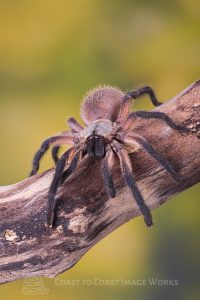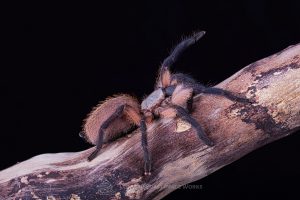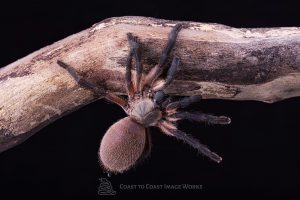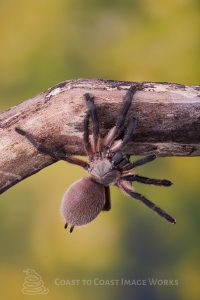 A stunningly beautiful Old World communal tarantula species, electric blue legs and a rich sandy orange body contrast beautifully. An average adult size makes them a mid-sized tarantula species at around 4-5 inches. In the wild they occur, as their name suggests, on one Island off the coast of Africa, Socotra island.
A stunningly beautiful Old World communal tarantula species, electric blue legs and a rich sandy orange body contrast beautifully. An average adult size makes them a mid-sized tarantula species at around 4-5 inches. In the wild they occur, as their name suggests, on one Island off the coast of Africa, Socotra island.
The Island is relatively dry, however in captivity it is necessary to create a microclimate in an area that is quite high humidity, around 70-85{cb5d0a8cf0c44aef2db327d9ab0dba08dd09aed1126b509e5fa01d3aaa87fe47} – this can be achieved by spraying their webs with water. The rest of the enclosure can be kept at around 60-70{cb5d0a8cf0c44aef2db327d9ab0dba08dd09aed1126b509e5fa01d3aaa87fe47} humidity. They will create quite an intricate system of webbing, especially when kept in communal groups. Provide a relatively large vivarium for groups, so they have room to go about their individual lives. Use a substrate such as coir, and provide plenty of hides and a small water bowl. Temperature needs to be  around 24-26C, with a small drop of around 4C at night.
around 24-26C, with a small drop of around 4C at night.
They are documented in having a powerful bite, with strong venom resulting in a painful experience. However they are often relatively docile, maybe fast moving but generally give plenty of warning with a threat display when a keeper over steps the mark.
keeper over steps the mark.
Food consists of the usual spider fare, they will readily eat any of the commercially available livefood. It’s worth noting that they must be kept quite well fed if kept communally, they have been known to eat each other.
